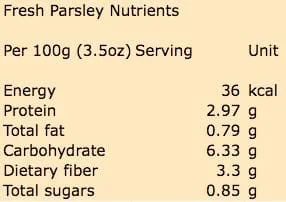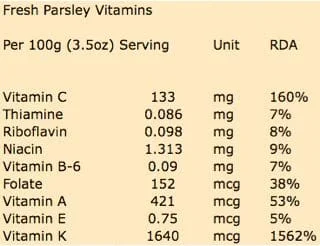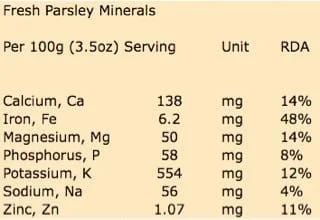Parsley (Petroselinum crispum) is one of the healthiest and nutritous herbs you can grow at home in your backyard, front yard or in a pot on your deck, patio or balcony.
Parsley originates from the Mediterranean region and is widely cultivated in countries such as Italy, Spain, Lebanon and Greece. There are two popular types of parsley: curly (more bitter taste) and Italian flat leaf parsley. Both types of parsley are available in super markets and grocery stores all year round fresh or dried.
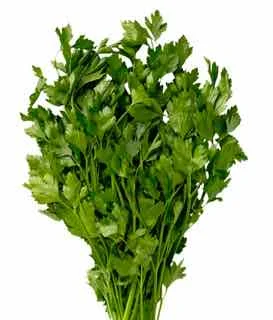 |
| Italian Flat Parsley |
Parsley has more uses than just being a decorative garnish that complements restaurant meals. This plant is used as an herb, a spice and a green leafy vegetable. It has a great taste and can be used to increase the flavor or appearance of a dish.
Parsley is great source of the antioxidant vitamins (K, C and A). Per 100 gram serving parsley contains 1562% of the recommended daily allowance (RDA) of vitamin K, which helps to promote good bone health and density. Parsley has 160% of the RDA of vitamin C per 100 gram serving which is 3 times more than a similar serving of oranges.
Parsley is a good source of iron, folate, potassium, calcium, phosphorus and magnesium. Your body needs iron to make sufficient amounts of healthy oxygen carrying red blood cells. Parsley contains 48% of the RDA of iron per 100 gram serving; which is twice as much as a similar serving of spinach.
Studies have shown that a diet reach in plant flavonoids could have great health benefits and could reduce the risk of developing certain diseases. Parsley contains a high concentration of the plant flavonoids myristicin and apigenin, which are known to boost the body’s immune system. Myristicin and apigenin may also boost the productivity of enzymes used by your liver to detoxify your body. Parsley can be helpful as a digestive aid and is a good source of fiber.
Parsley is used as a garnish in various European and Middle Eastern cuisines. It is one of the principal ingredients in Middle Eastern cuisine recipe dishes such as tabbouleh, fatouch, couscous and kafta (Lebanese beef kebabs).
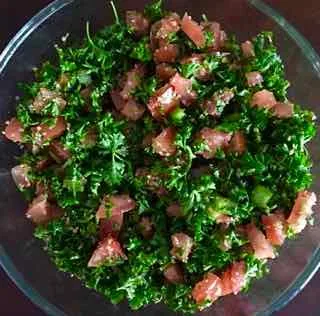 |
| Tabouleh |
Grow parsley in your backyard garden as it is a great companion plant and it encourages the growth of plants around it such as tomatoes, carrots, onions and peppers. Add parsley to your diet to benefit from its many healthy nutrients and to add flavor and color to your recipes.
Share
Follow
Recommended for you

